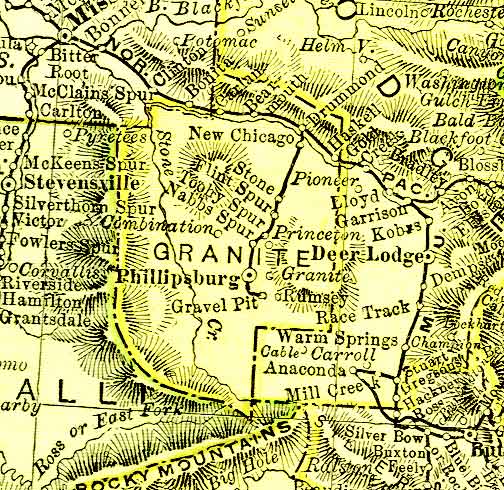|
Granite county was
created in March 1893, and was named for a mountain which contains
the Granite Mountain Silver Mine. It has an area of 1,728
square miles and is located north and west of the Continental
Continental Divide. The area was originally called Flint Creek
Valley. The county seat is Philipsburg.
The officers appointed to conduct the county business were:
|
|
|
Only months after Granite County's formation, silver mining came to an end when the price of silver plummeted in the panic of 1893. All but one of the major silver mines closed, banks failed, homes and businesses were abandoned in a major depression that hit the whole country but hit Granite County particularly hard. Within a decade, mining and Granite County would make a comeback.
The early records of Granite
County were copied from the records of Missoula and Deer Lodge County in
1893. The earliest records from Deer Lodge County were filed at Silver Bow,
the county seat from 1865 to 1867. In 1867, the county seat was moved to
Deer Lodge. Anaconda became the next county seat and records were moved
again. Some records pertaining to Granite County are still in either
Anaconda, Deer Lodge or otherwise missing.
|
||
